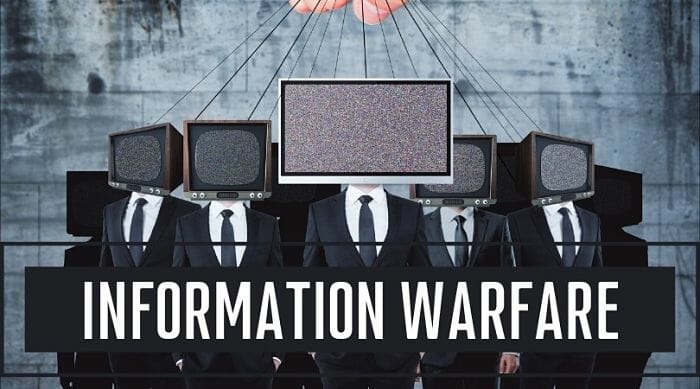Propagandise the Fact and Weaponise the Propaganda, as a strategy was even relevant throughout World War II, where both the Axis and Allied sides used propaganda to sway the opinions of Indian civilians and the troops. Propaganda has always had a role in history but today it has moved far beyond and extended its dimensions with a very strong and visible footprint. Today the anti-India forces, having both covert and overt propaganda outlets, are using propaganda as a tool to further the fault lines of the Indian society or even create them where they are not prevalent and ultimately resulting in conflict and violence. To diagnose these recent series of violent protests in India on different issues, the science of the propaganda must be properly understood.
Basically, propaganda is information that is partially true, but often exaggerated, false, or misleading. It is used to influence public opinion for achieving a set target. If propaganda is weaponised it can have very lethal, unimaginable and even uncontrolled consequences. It can be explained as a mind hacking technique, where the target surrenders the capability of critical thinking. The target can be a person, a group or even a nation.
Weaponised information, a form which is called as ‘Cognitive Hacking’, is content that is used as an attack to create harm, change beliefs or behaviour and support the goals of the attacker. Propaganda, conspiracy theories, social media bots, computer hacking and stealing of data, intentional lies, and disinformation can all be methods of weaponising information. In many cases, successful weaponisation of information requires action to be taken by the receivers of the information.
Weaponised propaganda manipulates the perception of people by exploiting their psychological vulnerabilities. It also attempts to change the target audience’s thoughts and actions, and disrupt harmony using disinformation. It exploits cognitive biases and shapes people by perpetuating their prejudices. The real goal of this technique is to manipulate the way people perceive reality. The presentation of the information may be skill fully crafted to exploit common cognitive biases and errors.
The storming of the U.S. Capitol in 2021, the Delhi riots 2020 or the current violent protests on the Agniveer recruitment scheme are a prime example of the effects of use of weaponised information. Propaganda has the capability to change the priorities of the government and turn the society into a civil war zone.
According to an article by Richard Forno, more than 2,400 years ago the Chinese military strategist and philosopher Sun Tzu made it an axiom of war that it is best to ‘subdue the enemy without fighting.’ Using information — or disinformation, or propaganda — as a weapon can be one way to destabilise a population and disable the target country.
Thomas M. Hill urged the US in an article to lead in starting an international conversation at the United Nations about the rules that will govern the use of weaponised information. “After decades of negotiation, there are international treaties (with varying degrees of impact) on many weapons, including: nuclear, chemical, biological, landmines, conventional weapons, cluster munitions, even on small arms and light weapons. It’s time we started a conversation about the rules that will govern the use of information as a weapon,” he stated and added “Informational warfare can be every bit as destabilising and destructive as conventional weapons, only without the immediate catastrophic property damage.”
In this sense, weaponised information is a message or content piece that is designed to affect the recipient’s perception about something or someone in a way that is not warranted, according to an article by Margaret Rouse. She writes that the term implies a target and the intention to cause harm. The goal of weaponised information is bringing about a change in beliefs and attitudes and, as a result, promoting behaviour that serves the attacker’s purpose.
“Weaponised information often consists of intentional falsehoods, known as disinformation,” says Rouse and adds “It can also be true but taken out of context, like a comment carefully selected from a longer statement so that it does not reflect what the speaker said. It may be a mixture of truth and lies, so that the known facts lend credence to the untruths. In other cases, the information may be true, but its significance over-blown or the timing of release calculated to cause the most harm possible.”
“Communication has been weaponised, used to provoke, mislead and influence the public in numerous insidious ways, argues Sophia Ignatidou, an academy fellow at Chatham House, researching AI, digital communication and surveillance, in an article. “Disinformation is just the first stage of an evolving trend of using information to subvert democracy, confuse rival states, define the narrative and control public opinion. Whatever we do, however many fact-checking initiatives we undertake, disinformation shows no sign of abating. It just mutates,” she writes.
India in not the only country which has been attacked by the weaponised disinformation, but it is a pattern of threat which many other countries are also facing. Propaganda may not be defined as a conventional weapon system but in reality, it is an ammunition which implodes rather than exploding.
The only way in which people can protect themselves from being affected by weaponised information is by strengthening their capacity for critical thinking and stay away from the half-baked truths. The society must also develop the capability of Community Propaganda Analysis.
(The writer is an author, columnist Senior Research Fellow Strategic Studies at SPMRF. Views are his own)
(The views expressed are the author's own and do not necessarily reflect the position of the organisation)

